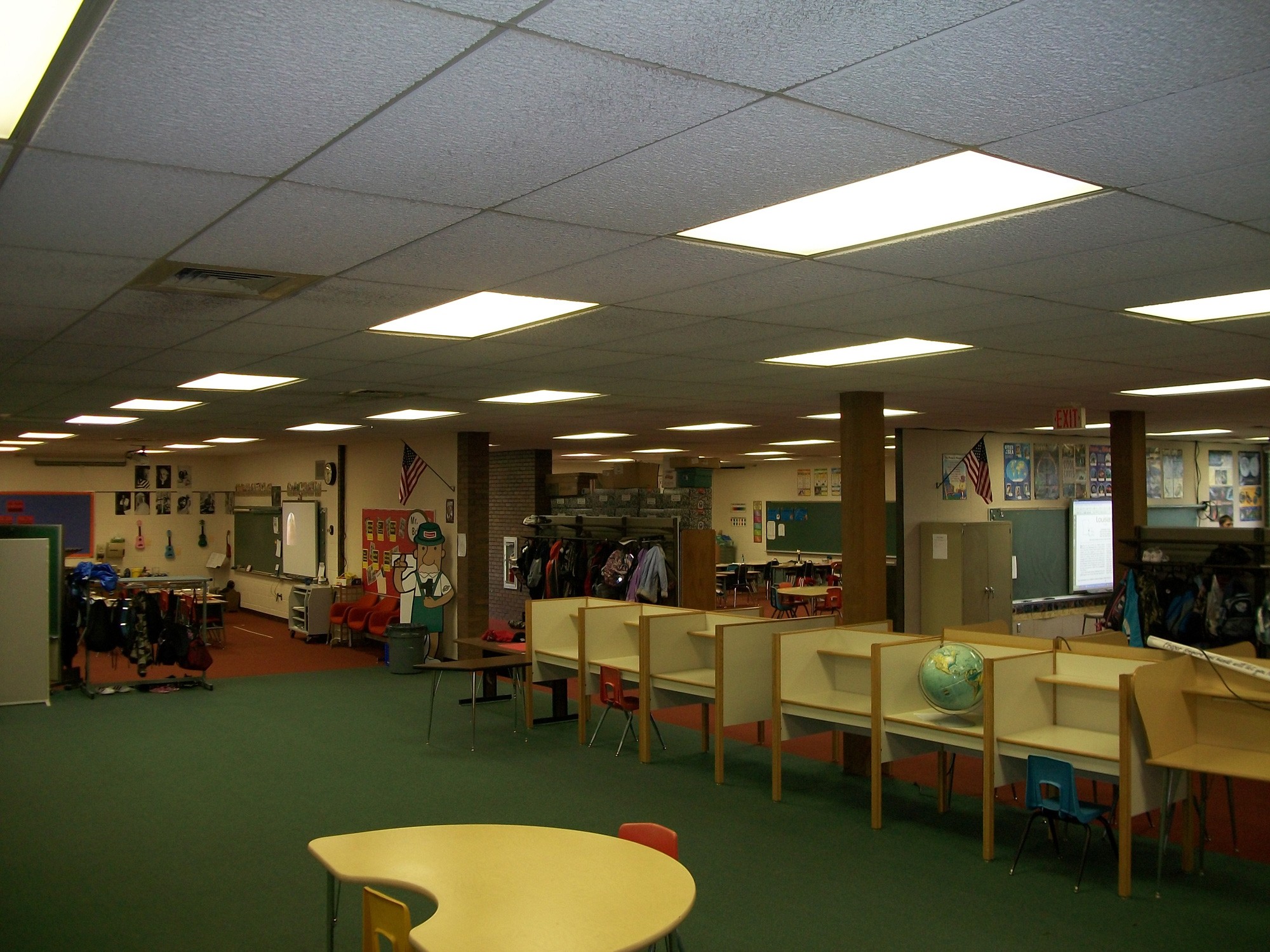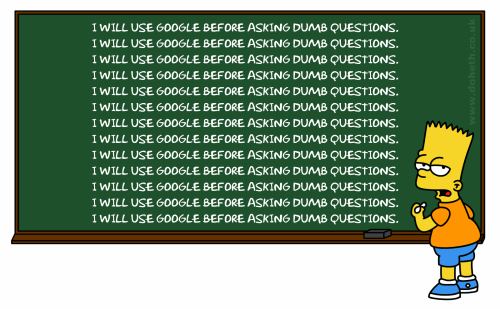A blackboard (also known as a chalkboard) is a reusable writing surface on which text or drawings are made with sticks of calcium sulphate or calcium carbonate, known, when used for this purpose, as chalk. Blackboards were originally made of smooth, thin sheets of black or dark grey slate stone.
What are the disadvantages of blackboards in schools?
Oct 11, 2021 · A blackboard (is also known as chalkboard) is a reusable writing surface on which text or drawings are made with sticks of calcium sulphate … 8. Blackboard Facts for Kids. https://kids.kiddle.co/Blackboard. Chalkboards are written on with chalk, which is actually not the stone chalk at all. It is actually made by factories.
How many colleges in the US use blackboard?
Sep 01, 2021 · A blackboard (also known as a chalkboard) is a reusable writing surface on which text or drawings are made with sticks of calcium sulfate or …
What is blackboard chalk made out of?
Oct 26, 2020 · Although traditionally composed of natural chalk, modern blackboard chalk is generally made from the mineral gypsum (calcium sulfate), often supplied in sticks … 10. Your Chalk Might Be Made From Million-Year-Old Plankton …
Why are so many blackboards Green?
Dec 07, 2008 · Blackboards, also known as chalkboards, were originally made from sheets of slate, a fine grained metamorphic rock derived from clay. Slate had the double advantage of being easily split into fine...

Is blackboard made up of wood?
Most modern chalkboards are made of porcelain enamel. In this particular manufacturing process, a tough and durable material such as steel is used as the base.
What kind of wood are used for Blackboard?
The surface of the chalkboard is usually made with a hardboard or MDF product. The surface of these boards is smooth. The first chalkboards were slate.Jun 8, 2017
How do you make homemade chalkboard paint?
0:252:21DIY | How to Make Chalkboard Paint (Only 2 Ingredients!) - YouTubeYouTubeStart of suggested clipEnd of suggested clipWe're going to start by combining two tablespoons of our plaster. And one tablespoon of water. AndMoreWe're going to start by combining two tablespoons of our plaster. And one tablespoon of water. And mix it together really well.
Can you use plywood to make a chalkboard?
With the circular saw, cut plywood to the size you want the chalkboard to be. Remember that the frame will take space around all the edges, so be sure to take that into consideration when sizing out your chalkboard. ... Following the directions on your can of chalkboard paint, paint your plywood. It may take 2-3 coats.Aug 23, 2013
What is a blackboard?
The blackboard is a recent innovation. Erasable slates, a cheap but durable substitute for costly paper and ink, had been in use for centuries. Students could practice reading and writing and math on their slates, in the classroom or at home.
What is a blackboard in education?
Teachers now had a flexible and versatile visual aid, a device that was both textbook and blank page, as well as a laboratory, and most importantly, a point of focus. The blackboard illustrates and is illustrated. Students no longer simply listened to the teacher; they had reason to look up from their desks.
What is chalk made of?
The chalk with which we write on boards isn’t actual chalk but gypsum, the dihydrate form of calcium sulfate. Gypsum is found naturally and can be used straight out of the ground in big chunks, but it can also be pulverized, colored, and then compressed into cylinders.
When did chalkboards start?
The massive, wall-sized chalkboards arrived in 1800 when a Scottish headmaster named James Pillans wanted his students to draw maps, according to Slate ’s excerpt of Blackboard: A Personal History of the Classroom.
When did the color change come to steel?
The color change came in the 1960s when companies sold steel plates coated with green porcelain-based enamel instead of the traditional dark slate. The new material was lighter and less fragile than the first blackboards, so they were cheaper to ship and more likely to survive the journey.
Who is Marissa Laliberte?
Marissa Laliberte-Simonian is a London-based associate editor with the global promotions team at WebMD’s Medscape.com and was previously a staff writer for Reader's Digest. Her work has also appeared in Business Insider, Parents magazine, CreakyJoints, and the Baltimore Sun. You can find her on Instagram @marissasimonian.
What is a chalkboard?
The chalkboard is a flat, vertical writing surface on which anything can be inscribed by means of a piece of chalk. The device is generally used for educational purposes, but it can also be found in the workplace, the home, and restaurants. While chalkboards can be manufactured from a variety of materials, porcelain enamel is ...
What colors are used for chalkboards?
The most common hues are green and black, although shades of brown, blue, and gray are also available. They can be customized during the manufacturing process to include special graphic elements.
How thick is a slip?
The coating must be at least 0.0025 inches (.062 mm) thick. The slip is set aside to dry.
Who invented the chalkboard?
The chalkboard of modern times was patented in 1823. It was developed by a leading educator of the day, Samuel Reed Hall. A minister, Hall founded Vermont's Concord Academy, one of the first formal training schools for American teachers. The early chalkboards were simple pine boards painted black.
What is a hornbook?
The hornbook was a strip of wood with a piece of paper fastened onto it. On the paper were a variety of learning aids in small print. A typical hornbook would carry both the Lord's Prayer and the alphabet, and a translucent sheet of animal horn covered the paper.
What is the most important element in the Earth's crust?
Another crucial element is silica, a crystalline compound derived from quartz or similar minerals. Found in the crust of the earth, silicon is a tough compound and is called silica when combined with oxygen. Silica is found in most rocks and is a common ingredient in many glass and ceramic products. The surface of a chalkboard is usually ...
Is chalkboard dust harmful?
The future of chalkboards is limited. Manufacturers of the product are diversifying into the making of dry-erase boards, which are smooth polypropylene surfaces. Special markers are used to write on them, and they can be erased by a piece of cloth. They are replacing standard chalkboards, particularly in business settings, because chalk dust is seen as a health hazard to humans and harmful to sensitive electronic and computer equipment.

Overview
A blackboard (also known as a chalkboard) is a reusable writing surface on which text or drawings are made with sticks of calcium sulphate or calcium carbonate, known, when used for this purpose, as chalk. Blackboards were originally made of smooth, thin sheets of black or dark grey slate stone.
Design
A blackboard can simply be a board painted with a dark matte paint (usually black, occasionally dark green). Matte black plastic sign material (known as closed-cell PVC foamboard) is also used to create custom chalkboard art. Blackboards on an A-frame are used by restaurants and bars to advertise daily specials.
Chalk sticks
Sticks of processed "chalk" are produced especially for use with blackboards in white and also in various colours. White chalk sticks are made mainly from calcium carbonate derived from mineral chalk rock or limestone, while coloured or pastel chalks are made from calcium sulphate in its dihydrate form, CaSO4·2H2O, derived from gypsum. Chalk sticks containing calcium carbonatetypically …
Advantages and disadvantages
As compared to whiteboards, blackboards still have a variety of advantages:
• Chalk requires no special care; whiteboard markers must be capped or else they will dry out.
• Chalk is an order of magnitude cheaper than whiteboard markers for a comparable amount of writing.
Etymology and history
The writing slate was in use in Indian schools as mentioned in Alberuni's Indica (Tarikh Al-Hind), written in the early 11th century:
They use black tablets for the children in the schools, and write upon them along the long side, not the broadside, writing with a white material from the left to the right.
The first classroom uses of large blackboards are difficult to date, but they were used for music …
Gallery
• Magnetic blackboard used for play and learning at the children's museum, Kitchener, Canada, 2011
• Teacher explaining the decimal system of weights using a blackboard, Guinea-Bissau, 1974
• Man writing on a blackboard in Guinea-Bissau in the open air, 1974
See also
• Blackboard Jungle
• Chalkboard gag from The Simpsons
• Chalkzone
• Conic Sections Rebellion, an 1830 student uprising when Yale students were required to draw their own diagrams on the blackboard
Further reading
• Aldrich Kidwell, Peggy; Ackerberg-Hastings, Amy; Lindsay Roberts, David (2008). "The Blackboard: An Indispensable Necessity". Tools of American Mathematics Teaching, 1800–2000. Johns Hopkins University Press. pp. 21–34. ISBN 978-0-8018-8814-4 – via Google Books.
• Ansell, Ben W. (2010). From the Ballot to the Blackboard: The Redistributive Political Economy of Education. New York City: Cambridge University Press. ISBN 9781107616998. OCLC 876849496.
Popular Posts:
- 1. pitt cc blackboard
- 2. filling in blanks on blackboard test
- 3. blackboard genitorurinary eam
- 4. how to allow for students to upload files in blackboard
- 5. miami.edi/blackboard
- 6. blackboard online submission portal
- 7. print test results in blackboard
- 8. muskie blackboard
- 9. blackboard learn primary vs secondary action buttons
- 10. mvcc blackboard help